Good to know
- Plants respire all the time, whether it is dark or light. They photosynthesise only when they are in the light.
| Conditions | Photosynthesis vs respiration | Overall result |
| Dark |
Respiration No photosynthesis |
|
| Dim light | Photosynthesis rate equals respiration rate | Neither gas is taken in or given out as each cancels the other out. |
| Bright light | Photosynthesis rate is greater than respiration rate |
|
Respiration
The process by which complex organic food compounds (carbohydrate, fat, protein etc) produce CO2 and H2O with released energy by oxidation reaction in presence of O2 is called respiration.
- Respiration is a catabolic process.
- Respiration is a series of oxidation reduction reaction.
- Here, O2 serves as the ultimate acceptor of electrons.
Respiration is of two types:
- Aerobic respiration
- Anaerobic respiration
Aerobic respiration
- Occurs in higher plants.
- Oxygen is essential.
Anaerobic respiration
- Occurs in microorganisms and lower plants.
- Oxygen is not essential.
- Organisms performing anaerobic respiration are called anaerobes.
- Obligate anaerobes
- They die in the presence of particular amount of oxygen.
- e.g. Clostridium botulinum.
- Facultative anaerobes
- They can survive both in presence or absence of oxygen.
- g. Yeast.
Glycolysis
(Gk. Glykys = sweet + lysis = splitting)
Glycolysisis a universal catabolic pathway in the living cells. It can be defined as the sequence of reactions for the breakdown of Glucose (6-carbon molecule) to two molecules of pyruvic acid (3-carbon molecule) under aerobic or anaerobic conditions.
- Glycolysis is an extra-mitochondrial pathway because all the enzymes needed for glycolysis are present in cytoplasm.
- It is carried out by a group of 11 enzymes.
- Glucose is converted into pyruvate in 10 steps.
- Glycolysis is also called Embden–Meyerhof–Parnas (EMP) pathway.
Site of glycolysis
- Cytoplasm
Types of glycolysis
There are two types of glycolysis:
- Aerobic Glycolysis:
- It occurs when oxygen is plentiful.
- Final product is pyruvate along with the production of eight ATP molecules.
- Anaerobic Glycolysis:
- It occurs when oxygen is scarce.
- Final product is lactate along with the production of two ATP molecules.
Phases of glycolysis
- Preparatory phase
- Also called glucose activation phase.
- Two molecules of ATP are invested and the hexose chain is cleaved into two triose phosphates.
- The first five stepsare included in this phase.
- Payoff phase
- Also called energy extraction phase.
- During this phase, conversion of glyceraldehyde-3-phophate to pyruvate and the coupled formation of ATP take place.
- Because Glucose is split to yield two molecules of D-Glyceraldehyde-3-phosphate, each step in the payoff phase occurs twice per molecule of glucose. The steps after 5 constitute payoff phase.
Good to know
- When ATP and ATP are present in a reaction, kinase enzyme is required.
- When NADPH, NADH, NAD etc are present, required enzyme is dehydrogenase.
- 1 NADH + H+ produces 3 ATP.
- 1 FADH2 produces 2 ATP.
- Glycolysis can start from starch where starch converts to glucose-1-phosphate with the help of phosphorylase enzyme ???? and then to glucose-6-phosphate by phosphoglucomutase enzyme.
Step 1: Uptake and phosphorylation of glucose

- Glucose is phosphorylated to form glucose-6-phosphate.
- The reaction is catalysed by the specific enzyme glucokinase in liver cells and by non-specific enzyme hexokinase in liver and extrahepatic tissue. The enzyme splits the ATP into ADP, and the Pi is added onto the glucose.
- Hexokinase is a key glycolytic enzyme. Hexokinase catalyses a regulatory step in glycolysis that is irreversible.
- Hexokinase, like many other kinases, requires Mg2+ for its activity.
Step 2: Isomerization of Glucose 6-phosphate to Fructose 6-phosphate

- Glucose-6-phosphate is isomerised to fructose-6-phosphate by phosphohexose isomerase.
- This reaction involves an aldose-ketose isomerisastion catalysed by phosphohexose isomerase. There is opening of the glucopyranose ring of glucose-6-phosphate to a linear structure which then changes to the furanose ring structure of fructose-6-phosphate.
Step 3: Phosphorylation of F-6-P to Fructose 1,6-Biphosphate

- Fructose-6-phosphate is further phosphorylated to fructose 1,6-bisphosphate.
- The enzyme is phosphofructokinase-1. It catalyses the transfer of a phosphate group from ATP to fructose-6-phosphate.
- The reaction is irreversible.
- One ATP is utilised for phosphorylation.
- Phosphofructokinase-1 is the key enzyme in glycolysis which regulates breakdown of glucose.
Step 4: Cleavage of Fructose 1,6-Biphosphate

- The 6 carbon fructose-1,6-bisphosphate is cleaved into two 3 carbon units; one glyceraldehyde-3-phosphate (GAP) and another molecule of dihydroxy acetone phosphate (DHAP).
- The enzyme which catalyses the reaction is aldolase. Since the backward reaction is an aldol condensation, the enzyme is called aldolase.
- The reaction is reversible.
Step 5: Interconversion of the Triose Phosphates
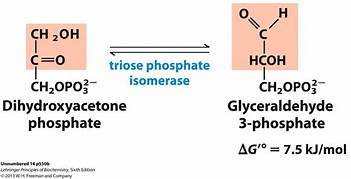
- GAP is on the direct pathway of glycolysis, whereas DHAP is not. Hence Triose-phosphate isomerase converts DHAP into GAP useful for generating ATP.
- Thus net result is that glucose is now cleaved into 2 molecules of glyceraldehyde-3-phosphate.
- This reaction is rapid and reversible.
Step 6: Oxidative phosphorylation of GAP to 1,3-Bisphosphoglycerate

- The first step in the payoff phase is the oxidation of glyceraldehyde 3-phosphate to 1,3-bisphosphoglycerate.
- This reaction is catalyzed by glyceraldehyde 3-phosphate dehydrogenase.
- It is the energy-yielding reaction. Reactions of this type in which an aldehyde group is oxidised to an acid are accompanied by liberation of large amounts of potentially useful energy. During this reaction, NAD+ is reduced to NADH.
- This is a reversible reaction.
Step 7: Conversion of 1,3-Biphosphoglycerate to 3-Phosphoglycerate

- The enzyme phosphoglycerate kinase transfers the high-energy phosphoryl group from the carboxyl group of 1,3-bisphosphoglycerate to ADP, forming ATP and 3-phosphoglycerate.
- This is a unique example where ATP can be produced at substrate level without participating in electron transport chain. This type of reaction where ATP is formed at substrate level is called as Substrate level phosphorylation.
Step 8: Conversion of 3-Phosphoglycerate to 2-Phosphoglycerate

- 3-phospho glycerate is isomerized to 2-phospho glycerate by shifting the phosphate group from 3rd to 2nd carbon atom.
- The enzyme is phosphogluco mutase.
- This is a readily reversible reaction.
- Mg2+ is essential for this reaction.
Step 9: Dehydration of 2-Phosphoglycerate to Phosphoenolpyruvate
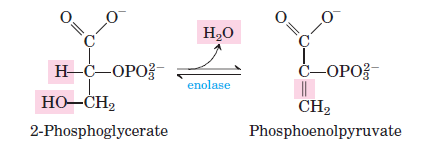
- 2-phosphoglycerate is converted to phosphoenol pyruvate by the enzyme enolase.
- One water molecule is removed.
- A high energy phosphate bond is produced. The reaction is reversible.
- Enolase requires Mg++.
Step 10: Conversion of Phosphoenol Pyruvate to Pyruvate
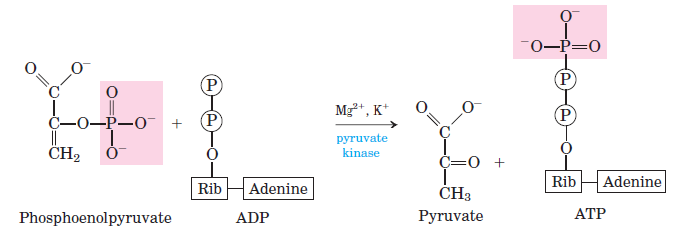
- Phosphoenol pyruvate (PEP) is dephosphorylated to pyruvate, by pyruvate kinase.
- First PEP is made into a transient intermediary of enol pyruvate; which is spontaneously isomerized into keto pyruvate, the stable form of pyruvate.
- One mole of ATP is generated during this reaction. This is again an example of substrate level phosphorylation.
- The pyruvate kinase is a key glycolytic enzyme. This step is irreversible.
Additional Step in Anaerobic Condition
When animal tissues cannot be supplied with sufficient oxygen to support aerobic oxidation of the pyruvate and NADH produced in glycolysis, NAD+ is regenerated from NADH by the reduction of pyruvate to lactate. Some tissues and cell types (such as erythrocytes, which have no mitochondria and thus cannot oxidize pyruvate to CO2) produce lactate from glucose even under aerobic conditions. The reduction of pyruvate is catalyzed by lactate dehydrogenase.

Or, pyruvic acid in presence of pyruvate decarboxylase forms ethanal or acetaldehyde at first and then acetaldehyde in presence of alcohol dehydrogenase reacts with NADH + H+ to be transformed intoethyl alcohol and subsequent production of NAD+.
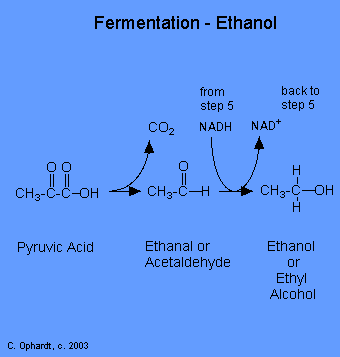
Net energy (ATP) yield per molecule of Glucose in Glycolysis
Energy Yield in Aerobic Glycolysis
| Step | Enzyme | Source | No. of ATP |
| 1 | Hexokinase | – | -1 |
| 3 | Phosphofructokinase | – | -1 |
| 6 | Glyceraldehyde-3-phosphate isomerase | NADH | (+3)*2 = +6 |
| 7 | Phosphoglycerate kinase | ATP | (+1)*2 = +2 |
| 10 | Pyruvate kinase | ATP | (+1)*2 = +2 |
| Total = 8 ATPs |
Energy Yield in Anaerobic Glycolysis
| Step | Enzyme | Source | No. of ATP |
| 1 | Hexokinase | – | -1 |
| 3 | Phosphofructokinase | – | -1 |
| 7 | Phosphoglycerate kinase | ATP | (+1)*2 = +2 |
| 10 | Pyruvate kinase | ATP | (+1)*2 = +2 |
| Total = 2 ATPs |
Significance of the Glycolysis Pathway
- Glycolysis is the only pathway that is taking place in all the cells of the body.
- Glycolysis is the only source of energy in erythrocytes.
- In strenuous exercise, when muscle tissue lacks enough oxygen, anaerobic glycolysis forms the major source of energy for muscles.
- The glycolytic pathway may be considered as the preliminary step before complete oxidation.
- The glycolytic pathway provides carbon skeletons for synthesis of non-essential amino acids as well as glycerol part of fat.
- Most of the reactions of the glycolytic pathway are reversible, which are also used for gluconeogenesis.
Important events
- 8 molecules of ATP are produced in aerobic glycolysis.
Pyruvate to Acetyl CoA formation
If oxygen is available, aerobic respiration will go forward. In eukaryotic cells, the pyruvate molecules produced at the end of glycolysis are transported into mitochondria, which are the sites of cellular respiration. There, pyruvate will be transformed into an acetyl group that will be picked up and activated by a carrier compound called coenzyme A (CoA). The resulting compound is called acetyl CoA. CoA is made from vitamin B5, pantothenic acid. Acetyl CoA can be used in a variety of ways by the cell, but its major function is to deliver the acetyl group derived from pyruvate to the next stage of the pathway in glucose catabolism.
- The conversion is also known as oxidative decarboxylation of pyruvic acid.
Site
- Mitochondrial matrix.
Enzymes involved in this process
- Pyruvate dehydrogenase.
- Dihydrolipoyl acetyl transferase.
- Dihydrolipoyl dehydrogenase.
These are commonly known as pyruvate dehydrogenase complex.
Co-factors involved in this process
- Thiamine Pyro Phosphate (TPP)
- Lipoic acid
- Mg2+
- NAD+
- Co-enzyme A
Breakdown of Pyruvate
In order for pyruvate (which is the product of glycolysis) to enter the Citric Acid Cycle (the next pathway in cellular respiration), it must undergo several changes. The conversion is a three-step process (Figure 1).

Step 1. A carboxyl group is removed from pyruvate, releasing a molecule of carbon dioxide into the surrounding medium.
The result of this step is a two-carbon hydroxyethyl group bound to the enzyme (pyruvate dehydrogenase). This is the first of the six carbons from the original glucose molecule to be removed. This step proceeds twice (remember: there are two pyruvate molecules produced at the end of glycolysis) for every molecule of glucose metabolized; thus, two of the six carbons will have been removed at the end of both steps.
Step 2. NAD+ is reduced to NADH.
The hydroxyethyl group is oxidized to an acetyl group, and the electrons are picked up by NAD+, forming NADH. The high-energy electrons from NADH will be used later to generate ATP.
Step 3. An acetyl group is transferred to conenzyme A, resulting in acetyl CoA.
The enzyme-bound acetyl group is transferred to CoA, producing a molecule of acetyl CoA.
Note that, during the second stage of glucose metabolism, whenever a carbon atom is removed, it is bound to two oxygen atoms, producing carbon dioxide, one of the major end products of cellular respiration.
In summary
In the presence of oxygen, pyruvate is transformed into an acetyl group attached to a carrier molecule of coenzyme A. The resulting acetyl CoA can enter several pathways, but most often, the acetyl group is delivered to the citric acid cycle for further catabolism. During the conversion of pyruvate into the acetyl group, a molecule of carbon dioxide and two high-energy electrons are removed. The carbon dioxide accounts for two (conversion of two pyruvate molecules) of the six carbons of the original glucose molecule. The electrons are picked up by NAD+, and the NADH carries the electrons to a later pathway for ATP production. At this point, the glucose molecule that originally entered cellular respiration has been completely oxidized. Chemical potential energy stored within the glucose molecule has been transferred to electron carriers or has been used to synthesize a few ATPs.
Important events
- 1*2 = 2 molecules of carbon dioxide and 2*2 = 4 high energy electrons are liberated.
- The glucose molecule is completely oxidized.
 Plantlet The Blogging Platform of Department of Botany, University of Dhaka
Plantlet The Blogging Platform of Department of Botany, University of Dhaka
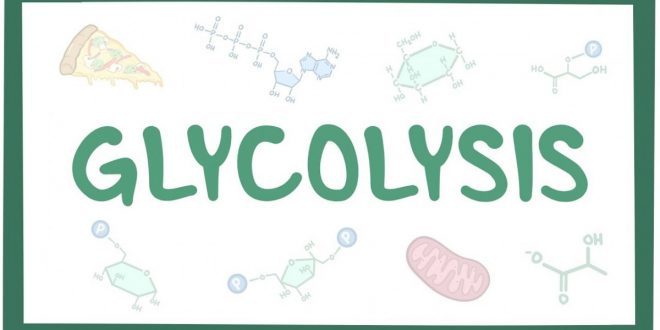

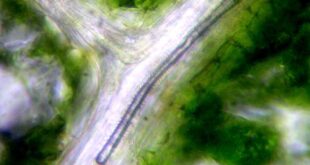
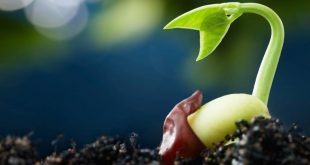
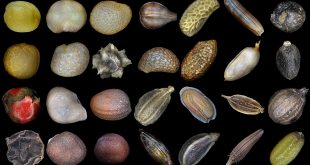

Can you be more specific about the content of your article? After reading it, I still have some doubts. Hope you can help me.